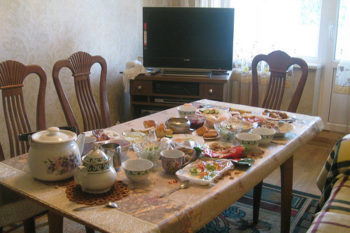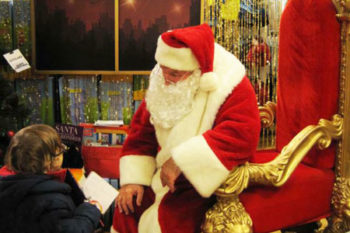Holy Week in Christianity is the last week of Lent (the week before Easter). In Costa Rica we celebrate the whole week, literally, and it has been this way since 1526, date when the first Holy Week took place in the Chira Island. Considered the most important holiday in the Catholic calendar, it commemorates the last week of the earthly life of Jesus Christ before his crucifixion on Good Friday and his resurrection on Easter Sunday.
For most Costa Ricans, Holy Week is a time for religious traditions as families gather to share their faith and time together. Many religious activities, including colorful processions, are held during those days in all cities and towns of the country.
Holy Week begins on Palm Sunday, which commemorates the triumphal entry of Jesus into Jerusalem. On Holy Thursday, the main events are the institution of Communion and the betrayal by Judas; and on Good Friday, the arrest, trial, crucifixion, death, and burial of Jesus Christ. On Holy Saturday, Jesus rested in the grave and on Easter Sunday, He resurrected. All these situations are represented through masses and either dramatizations with human actors or effigies in processions.

The last words Jesus Christ said before dying

The resurrection of Jesus Christ represented on a float
 One of the most dramatic processions is the journey of Jesus to where He is crucified on the cross, where Roman soldiers’ actors perform flagellation and there is a representation of every person that was at the scene of Christ’s death. Some of the common characters seen in most processions are angels, the Virgin Mary, Mary Magdalene, the apostles, and others. These processions are sometimes even covered by local television stations.
One of the most dramatic processions is the journey of Jesus to where He is crucified on the cross, where Roman soldiers’ actors perform flagellation and there is a representation of every person that was at the scene of Christ’s death. Some of the common characters seen in most processions are angels, the Virgin Mary, Mary Magdalene, the apostles, and others. These processions are sometimes even covered by local television stations.

Re-enactment of the crucifixion

Re-enactment of the burial of Christ
Because of how important Semana Santa (Holy Week) is, Thursday and Friday are official holidays on the Costa Rican calendar, and many government employees as well as all students enjoy the entire week off. Banks and businesses are closed during those days and public transportation is limited.
In addition, nearly a million Costa Ricans decide to take advantage of their time off work to go to the beach and enjoy the typical warm weather. During the whole week, the television stations play classic religious films like “Jesus of Nazareth”, “The Ten Commandments” and “The Passion of the Christ”.
Holy Week in Costa Rica would not be complete without eating miel de chiverre, a type of honey made from the watermelon-sized chiverre, a squash-like fruit in season during this time.
The famous empanadas de chiverre are a wrapped bread dish filled with the chiverre honey, which are mainly prepared during Holy Week.

Delicious empanadas de chiverre
Due to the Catholic practice of not eating meat on Fridays during Lent, the tradition is to eat seafood. That’s why other typical foods include fish soup, fried fish, rice with shrimp and several dishes with palm hearts. During this special holiday, a Dry Law is in place; so on Wednesday at midnight all bars and liquor stores close. Catholics are not supposed to drink during the mourning of Jesus, not until He has resurrected on Sunday.
No matter how Costa Ricans and visitors decide to spend these days, Holy Week is a very important holiday which manifests itself in all aspects of daily life from TV to transportation to work schedules, food and even alcohol sales. If you would like to visit Costa Rica, come during Holy Week, it will certainly be an unforgettable experience!
Read more:
Costa Rica is “pura vida”!
Hot cross buns – an Easter treat from the UK
Pass the Colcannon: St Patrick’s day in the USA






Very interesting post.
We don’t have so many traditions around Easter in the UK (at least, not that I know!). I enjoyed reading about yours, especially the processions.
In Spain I ate a kind of jam called cabello de angel which is also made out of squash, could it be the same thing as miel de chiverre? I was so surprised when I found it was made from a vegetable, because it is so sweet.
Thanks Ana and Liz! 🙂
The “chiverre” is also called ‘cabello de ángel’ http://en.wikipedia.org/wiki/Cabell_d%27%C3%A0ngel
I was wondering if it’s a fruit or a vegetable, and I found this: “Though considered a vegetable in cooking, botanically speaking, squash is a fruit (being the receptacle for the plant’s seeds)”
The Costa Rican miel de chiverre is prepared with a syrup made from sugar cane, that’s why it’s so sweet. Maybe it’s the same in Spain 🙂 I’m gonna ask a friend of mine who’s Spanish.
Hi Nuria! I’d love to go to Costa Rica one day!
As for Pura Vida, did you know the expression is famous in Spain because of a novel by Mendiluce set in Costa Rica?
Thank you Marta!
OMG, I didn’t know about Mendiluce! I just googled it(http://reginairae.blogcindario.com/2006/01/00259-pura-vida-de-jose-maria-mendiluce.html)
and I really wanna read it! It seems like everybody loves the novel, and it has encouraged people to travel to Costa Rica. How cool is that! A book is def so powerful! I appreciate your telling me about it, I’m gonna buy it! 😀
Pura vida!
Pura vida, Nuria! [Can I say that as if it was ‘Hello’ or does it sound weird? :)]
I read that book years ago and loved it.
Regarding beaches, is the water cold in Easter? When is it warmer? As a child from the Mediterranean sea, I find water is cold even in the South of Portugal 🙂
Thanks!
Yes, you can say pura vida as a greeting and in many other circumstances. If you read my post “Costa Rica is pura vida!”, you’ll understand when to use it better 🙂 In Costa Rica the dry season goes from December to April, so the weather during Holy Week is really warm. Everybody goes to the beach, so the coast is always crowded but the water is not cold at all 😉
Nuria, thank you so much for highlighting our traditions in such a splendid manner. You´ve proven to be a true Costa Rican. We all appreciate your efforts!
Awwhhh, how sweet Sonia! Thank you very much! 🙂
I really appreciate your words.
VERY , VERY NICE!!! OTIMO MINHA AMIGA!!! FICOU CLARO E INTERESSANTISSIMO!!! PARABABENS!! CONGRATS!!
ALEX!!!
Alex! Muito obrigada pelas suas palavras!! 🙂
Beijos!
I enjoyed a great deal this post, and I also appreciate the way you were able to portray our culture so truthfully, thus making it so appealing.
Congratulations, May Ling
Thank you so much May Ling! 🙂
Nuria, It’s impressive how well and entertaining you explain our great traditions. Excellent
Awwhh, thank you very much Ana! 😀 I’m glad you liked it!
wow, Nuriah! I really liked your post on Costa Rica! I want to go.
Thank you so much, Janessa! You’re welcome to Costa Rica anytime! 😉
Thanks!! 🙂 Costa Rica looks like a really fun place to go and I want to participate in what they do for Easter Holy Week.
It’s definitely quite an experience! 😉 Hope you can make it soon!
Is it hard to find lodging and places to eat during holy week??
Hi, Paula! Well, it depends on where you want to go…most businesses close during Good Thursday and Good Friday, but restaurants are usually open. The rest of the days everything’s pretty normal. Many people go to the beach, so if that’s where you’re planning to go to, there will be lodging for sure! But you gotta book early 😉
I like it a lot, professor! It is a complete and nice way to explain our traditions, it makes me feel so proud and happy to be part of Costa Rica, Thank you very much! 🙂
Thank you so much, Éricka! 😉